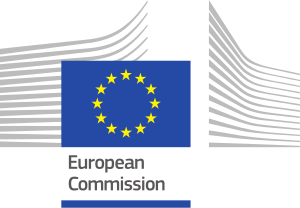EUnetHTA Project (2006-2008)
General Objectives
The overall strategic objective of the network was to connect public national health technology assessment (HTA) agencies, research institutions and health ministries, enabling an effective exchange of information and support for policy decisions by Member States. This implied that the network would help provide reliable, transparent, and transferable information on the short- and long-term effectiveness of health technologies as input to decision-making within the EU. By doing this, the network would assist the EU, its Member States and candidate countries to plan, deliver and monitor health services effectively.
The strategic objectives of the EUnetHTA Project were:
- To reduce overlap and duplication of effort and hence promote more effective use of resources;
- To increase HTA input for decision-making in Member States and the EU, thus increasing the impact of HTA;
- To strengthen the link between HTA and health care policy making in the EU and its Member States;
- To support countries with limited HTA experience.
Specific objectives were defined to facilitate rapid, productive collaboration that would lead to the development of a range of practical tools to deliver the strategic objectives. Work Packages were aligned with specific objectives and each was expected to produce substantial deliverables (please see description of EUnetHTA Project Work Packages).
Lead partners
NIPHNO (formerly NOKC) (EUnetHTA Assembly), HAS (Executive Board), CAHTA (Founding Partner), HAS (Founding Partner), DIMDI (EUnetHTA Assembly), DIMDI (Germany), DIMDI (Partner)
Associated Partners
MoH Cyprus (Cyprus), UTA (Estonia), AETSA (EUnetHTA Assembly), DIMDI (EUnetHTA Assembly), HIQA (EUnetHTA Assembly)
Collaborating Partners
DIMDI (EUnetHTA Assembly), IQWIG (EUnetHTA Assembly), IQWIG (Executive Board), SNHTA (Executive Board), DIMDI (Founding Partner), SNHTA (Founding Partner)
Work Packages
Project WP1 – Coordination
Project WP2 – Communications
Project WP3 – Evaluation
Project WP4 – Common Core HTA
Project WP5 – Adapting HTA
Project WP6 – HTA and Health Policy
Project WP7 – New Technologies
Project WP8 – System to support HTA
Stakeholder Involvement
Please see below the policy and procedures guiding stakeholder involvement activities in the EUnetHTA Joint Action 1. The documents were a result of an extensive development process that were managed by the Executive Committee. It involved consultation with multiple interested parties including a public consultation and several rounds of review by the EUnetHTA Joint Action Plenary Assembly and the Stakeholder Forum.
EUnetHTA JA Stakeholder Involvement Policy
EUnetHTA JA Stakeholder Involvement Standard Operating Procedures (SOP)
EUnetHTA JA Expert Involvement Standard Operating Procedures (SOP)
Deliverables and Other Outputs
- An organisational structure for a European network for HTA including a supporting Secretariat
- An elaborate Communication Strategy of the network
- An internal evaluation of the project
- The framework for an external evaluation of EUnetHTA
- A generic methodological HTA framework based on current best practices (HTA Core Model™)
(HTA Core Model™ for Diagnostic Technologies and HTA Core Model™ for Medical and Surgical Interventions) - Two pilot examples of Core HTAs for different types of questions
(1 Core HTA on Drug Eluting Stents and 1 Core HTA on MSCT Angiography) - Handbook on Core HTA development
- HTA Adaptation toolkit – from existing HTAs into other contexts
(HTA Adaptation Toolkit and Glossary of HTA Adaptation terms) - Applicability testing of core information from existing HTA reports in various national environment using the toolkit
- A book containing a systematic overview of the HTA & health policy links “Health Technology assessment and Health Policy-making in Europe” (developed in collaboration with the European Observatory on Health Systems and Policies)
- An open EUnetHTA Stakeholder Forum to exchange views, expectations/feedback on HTA with stakeholders
- Web-based toolkit to facilitate European collaboration on evidence generation on promising health technologies
- A structured information service on high volume, costly, rapidly developing, emerging technologies
- A clearinghouse functionality prototype
- A handbook on HTA capacity building and institutionalising HTA
- Final report from the project
- EUnetHTA Conference “HTA’s Future in Europe”

